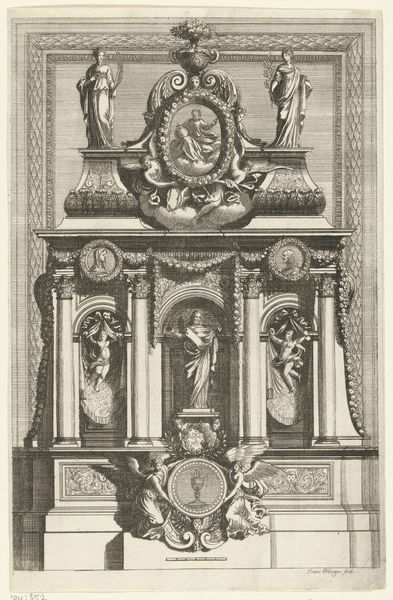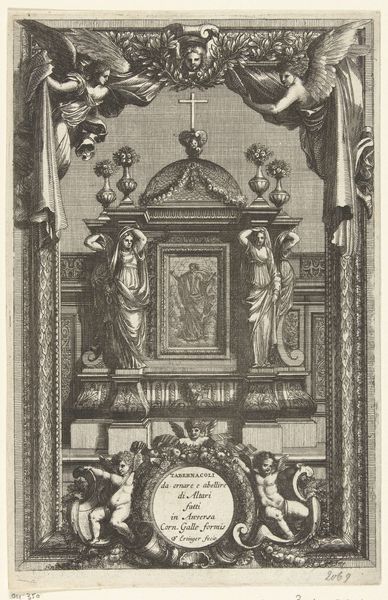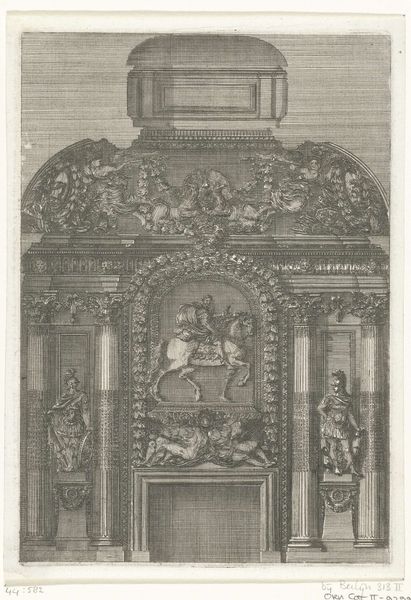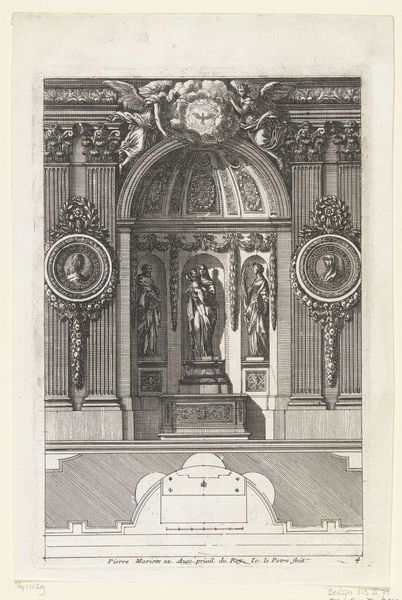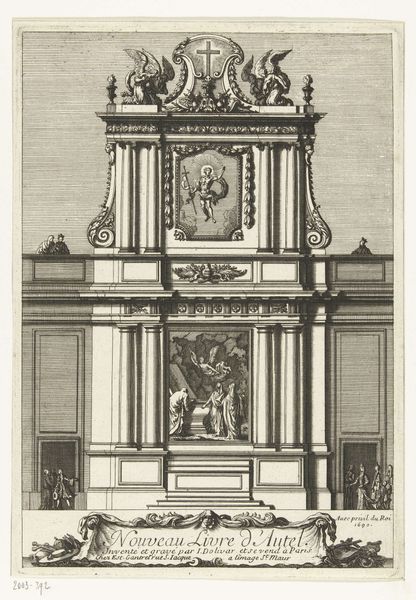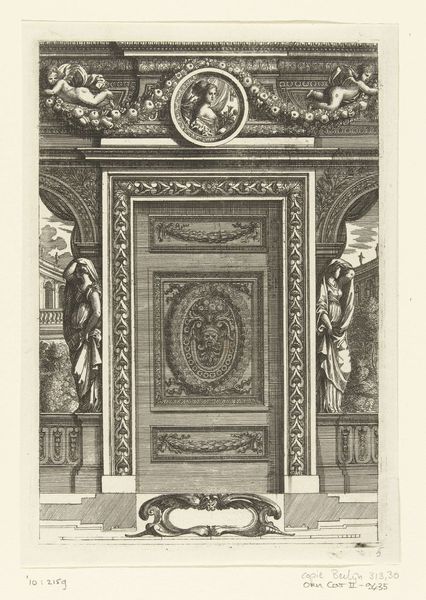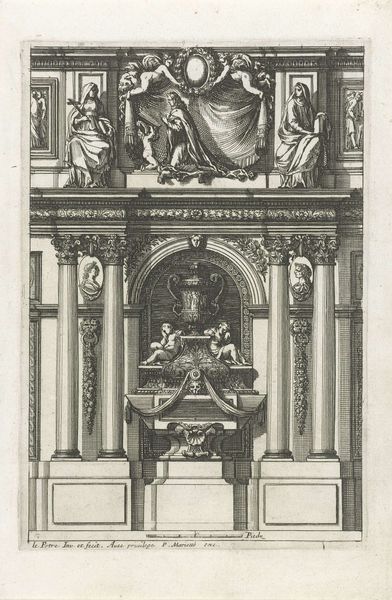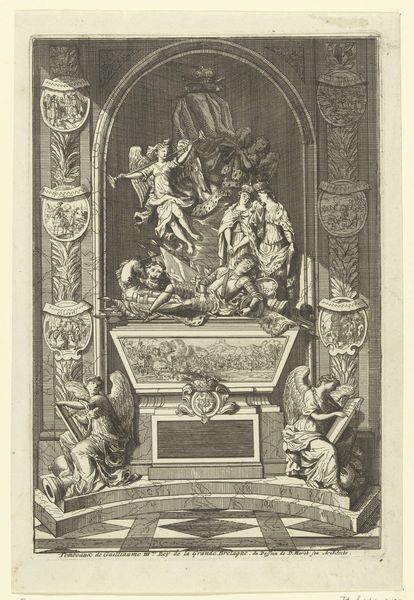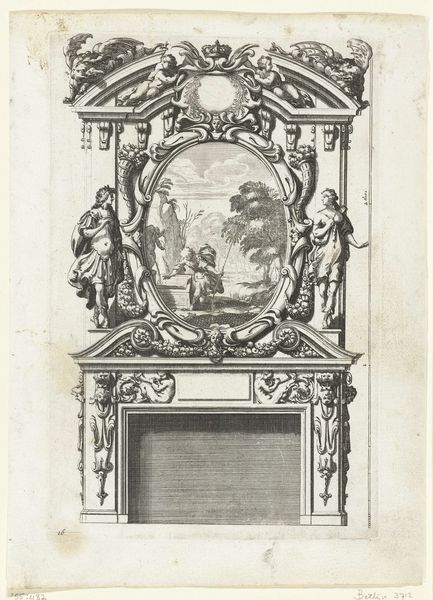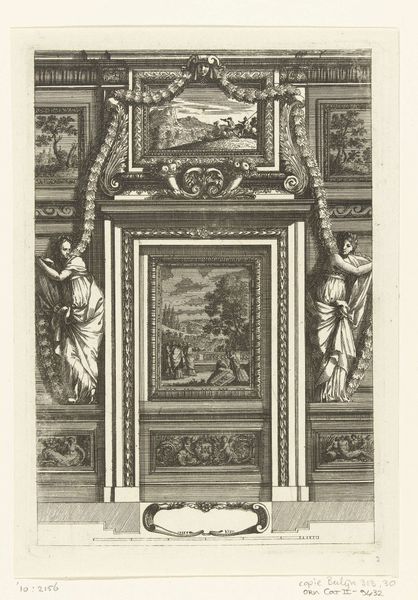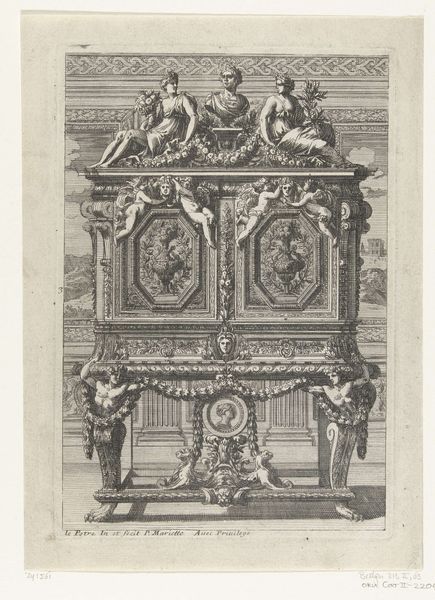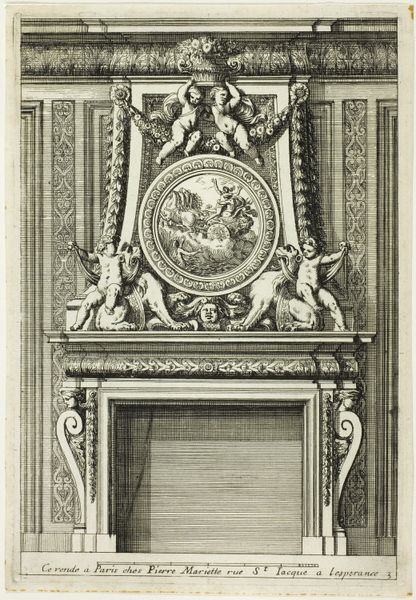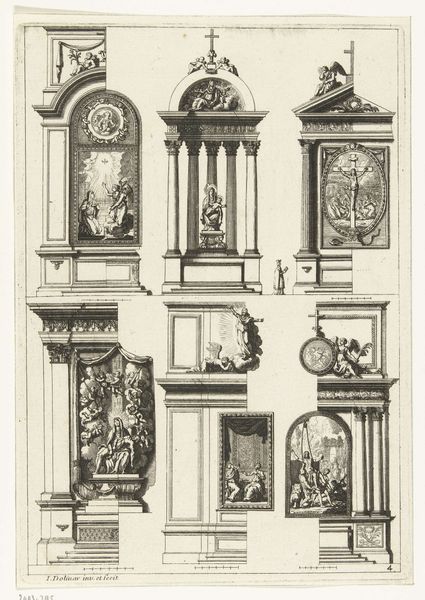
Tabernakel met schilderij van heilige Maagd en Christus c. 1650 - 1678
0:00
0:00
franzertinger
Rijksmuseum
engraving
#
baroque
#
form
#
classicism
#
line
#
history-painting
#
engraving
Dimensions: height 225 mm, width 144 mm
Copyright: Rijks Museum: Open Domain
Curator: Gazing at this engraving, the sheer artistry on display—the density of lines giving depth to stone, fabric—it makes you wonder about the craftsman’s hand. Editor: It certainly does. We’re looking at a print called “Tabernacle with a painting of the Holy Virgin and Christ”, created between 1650 and 1678 by Franz Ertinger. The piece currently resides here at the Rijksmuseum. And, well, my initial reaction is it reminds me of an extravagant theater set! There’s almost too much going on; drapery, columns, sculptures… Curator: Exactly! And that drama is key. Look closer, and you see how Ertinger contrasts textures—the smooth faces of the holy figures against the almost brutalist stonework. It's designed to inspire awe, isn't it? The tabernacle is a monument, of course, but look how carefully that scene has been orchestrated and produced to make you kneel before the sacred images in a setting both beautiful and untouchable. Editor: It certainly suggests production on a grand scale—so much handcraft invested in its creation, but for whom, exactly? Who was meant to be viewing this artwork and to what end? Curator: Presumably a patron of great power, a statement about authority – and faith, I assume. Someone seeking to impress. Though the intimate depiction of Mary holding Jesus gives it a tenderness that defies the cold architectural frame. The entire image feels at once reverent, yet subtly self-aggrandizing. What do you mean by viewing and to what end? Editor: Just the place such objects occupy. If, as a materialist, I am interested in both where things come from, what makes it possible, as well as who it is intended for, what effect does such a spectacle of making really produce in someone? Curator: I guess one is always left guessing in these matters, looking across a gulf in time… Editor: Absolutely. An interesting paradox. Curator: This work really does draw you in with the intimacy of its holy family only to push you away again with the grandiose architecture around them. I find I have more questions than answers now, which is maybe just what Ertinger intended all along. Editor: Indeed. We’ve only touched the surface. What other narratives are hiding in plain sight?
Comments
No comments
Be the first to comment and join the conversation on the ultimate creative platform.
